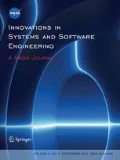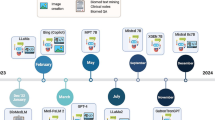Abstract
Machine translation is an effective way of achieving suitable translations for a given language pair without human intervention. Machine translation can be a very tedious task when the resources for the concerned language pair are low, and the English–Assamese language pair is one such. Neural machine translation is among the different machine translation techniques that use artificial neural networks to learn the nonlinear relationship between bilingual sentence pairs. In this paper, a neural machine translation model is implemented, which uses our proposed hybrid attention mechanism. This hybrid attention mechanism consists of additive and multiplicative attention mechanisms. The proposed attention mechanism is not only capable of selecting an optimal attention mechanism, but also gives the average loss value per epoch to be minimal. The model with our proposed hybrid attention mechanism outperforms the other two models with additive and multiplicative attention by achieving a BLEU score of 27.20 on English–Assamese and a BLEU score of 25.88 on the Assamese–English language pair.





Similar content being viewed by others
References
Allen RB (1987) Several studies on natural language and back-propagation. In: Proceedings of the IEEE first international conference on neural networks, IEEE 2, pp 335–341
Bahdanau D, Cho K, Bengio Y (2014) Neural machine translation by jointly learning to align and translate. In: Proceedings of the 2014 international conference on learning representations
Bengio Y, Ducharme R, Vincent P, Jauvin C (2003) A neural probabilistic language model. J Mach Learn Res 3:1137–1155
Brown PF, Cocke J, Pietra SAD, Pietra VJD, Jelinek F, Mercer RL, Lafferty J, Roossin PS (1990) A statistical approach to machine translation. Comput Linguist 16(2):79–85
Cho K, Merrienboer BV, Bahdanau D, Bengio Y (2014) Learning phase representations using RNN encoder-decoder for statistical machine translation. In: Proceedings of the 2014 conference on empirical methods in natural language processing (EMNLP). https://doi.org/10.3115/v1/d14-1179
Cho K, Merrienboer BV, Bahdanau D, Bengio Y (2014) On the properties of neural machine translation: encoder-decoder approaches. In: Proceedings of SSST-8, eighth workshop on syntax, semantics and structure in statistical translation. https://doi.org/10.3115/v1/w14-4012
Choudhary H, Rao S, Rohilla R (2018) Neural machine translation for English-Tamil. In: Proceedings of the third conference on machine translation: shared task papers. https://doi.org/10.1145/3140107.3140111
Choudhary H, Rao S, Rohilla R (2020) Neural machine translation for low resourced languages. In: Proceedings of The 12th Language resources and evaluation conference, LREC 2020, Marseille, France
Christopher MTLHP, Manning D (2015) Effective approaches to attention based neural machine translation. In: Proceedings of the 2015 conference on empirical methods in natural language processing. https://doi.org/10.18653/v1/d15-1166
Das A, Yerra P, Kumar K, Sarkar S (2016) A study of attention-based neural machine translation models on Indian languages. In: Proceedings of the 6th workshop on south and southeast asian natural language processing, pp 163–172
Firat O, Cho K, Bengio Y (2016) Multi-way, multilingual neural machine. Translation with a shared attention mechanism. In: Proceedings of the 2016 conference of the North American Chapter of the Association for 17 computational linguistic: human language technologies. https://doi.org/10.1016/j.csl.2016.10.006
Johnson M, Schuster M, Le QV, Krikun M, Wu Y, Chen Z, Thorat N, Viégas F, Wattenberg M, Corrado G, Hughes M, Dean J (2017) Google’ s multilingual neural machine translation system: enabling zero-shot translation. Trans Assoc Comput Linguist 5:339–351
Narayan R, Chakraverty S, Singh VP (2016) Quantum neural network based machine translator for English to Hindi. Appl Soft Comput 38(1060):1075. https://doi.org/10.1016/j.asoc.2015.08.031
Papneni K, Roukos S, Ward T, Zhu, W (2002) BLEU: a method for automatic evaluation for machine translation. In: Proceedings of the 40th annual meeting of the association for computational linguistics (ACL). https://doi.org/10.3115/1073083.1073135
Sennrich R, Haddow B, Birch A (2016) Neural machine translation of rare words with subword units. In: Proceedings of the 54th annual meeting of the association for computational linguistics, 1. https://doi.org/10.18653/v1/p16-1162
Shah P, Bakarola V (2019) Neural machine translation system of Indic language-attention based approach. In: Second international conference on advanced computational and communication paradigms. https://doi.org/10.1109/ICACCP.2019.8882969
Singh S, Anand Kumar M, Soman KP (2018) Attention based English to Punjabi neural machine translation. J Intell Fuzzy Syst 34(3):1551–1559. https://doi.org/10.3233/jifs-169450
Singh M, Kumar R, Chana I (2020) Corpus based machine translation system with deep neural network for Sanskrit to Hindi Translation. Procedia Comput Sci 167:2534–2544. https://doi.org/10.1016/j.procs.2020.03.306
Sutskever I, Vinyals O, Le Q (2014) Sequence to sequence learning with neural networks. Adv Neural Inf Process Syst 27:3104–3112
Verma C, Singh A, Seal S, Singh VMI (2019) Hindi-English neural machine translation using attention model. Int J Sci Technol Res 8:11–11
Weaver W (1949) The mathematics of communication. Sci Am 181(1):11–15
Author information
Authors and Affiliations
Additional information
Publisher's Note
Springer Nature remains neutral with regard to jurisdictional claims in published maps and institutional affiliations.
Rights and permissions
About this article
Cite this article
Nath, B., Sarkar, S., Das, S. et al. Neural machine translation for Indian language pair using hybrid attention mechanism. Innovations Syst Softw Eng (2022). https://doi.org/10.1007/s11334-021-00429-z
Received:
Accepted:
Published:
DOI: https://doi.org/10.1007/s11334-021-00429-z




